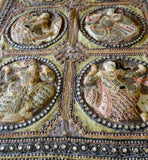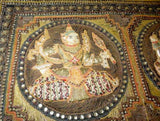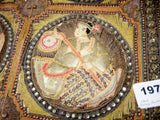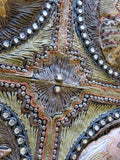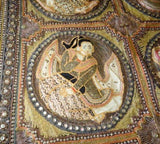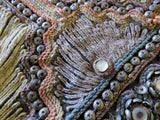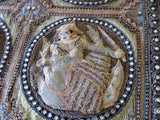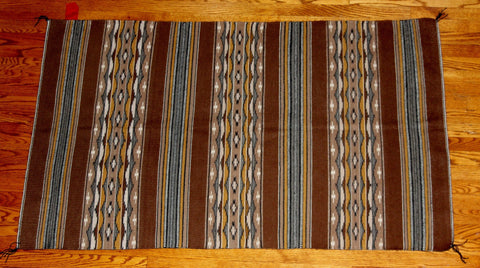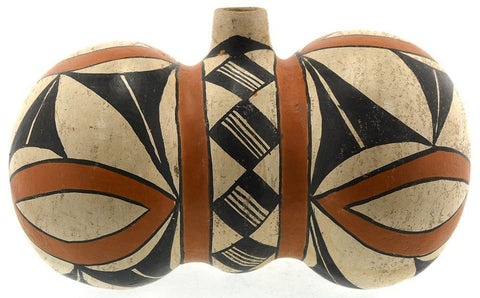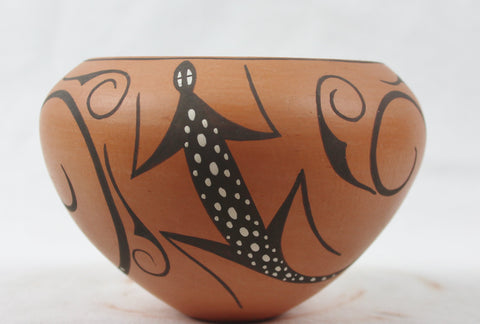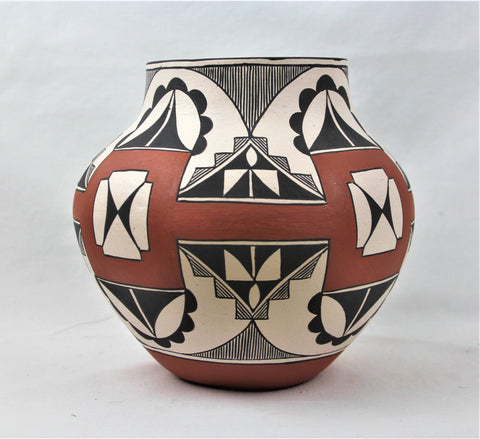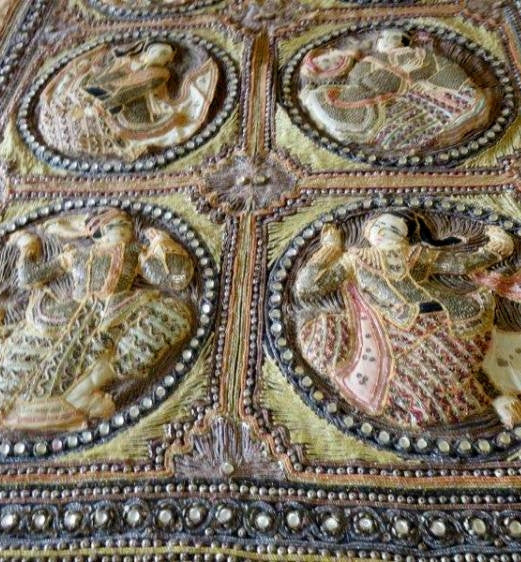
Tapestry, Extra Large Burmese Kalaga Textile, Mid 1900's, #932-Sold
$ 13,000.00
Tapestry,
Extra Large Burmese Kalaga Textile, Mid 1900's
Description: Beautiful extra large Burmese Kalaga textile. Estimated to be at least 50 years old, probably older with a guess around the 1930's-40's..
Condition: Good for age, little bit of separation from the edge trim piece than can be resewn. Few small wear holes in the back cotton covering, age staining on back. Overall very good condition, none of the glass beads or other fixtures are missing..
Provenance: Purchased in Hawaii in 1990 from an antique dealer. Originally collected from the South Seas Trading Post in Thailand. Still has the Thai lead import seal on the tag which reads: Tag issued by the Department of "Fine Arts, Ministry of Education, Thailand-In accordance with export permit #428/2533.
Dimensions: 64” x 30.5”
_______________
Background Info on Kalaga’s follow:
Kalaga (Burmese) is a heavily embroidered appliqué tapestry made of silk, flannel, felt, wool and lace against a background made of cotton or velvet indigenous to Burma (Myanmar).[1] The word kalaga, which means "curtain," comes from the Burmese language, although Burmese refer to such tapestries as shwe gyi do; lit. "gold thread embroidery").[2]
These tapestries use a sewing technique called shwe gyi [3]
This art form emerged during the Konbaung dynasty in the mid-19th century and reached its zenith during the reign of Mindon Min, when velvet became fashionable at the royal court.[4]
In a typical tapestry, padded figures are cut from various types of cloth and sewn onto a background, usually red or black cloth to form an elaborate scene, traditionally from Burmese classical plays (e.g. Ramayana, Jataka).[1][5][6]
The figures are sewn using a combination of metallic and plain threads and adorned with sequins, beads and glass stones.[6]
References.
1. a b Mukharji, T. N. (1888). Art-manufactures of India. Superintendent of Government Printing, India. pp. 387–388.
2."Journal of Burma Studies - Volume 16.1". Northern Illinois University. Retrieved 6 October 2013.
3. Fraser-Lu, Sylvia (1994). Burmese Crafts: Past and Present. Oxford University Press. p. 265. ISBN 9780195886085.
4. Falconer, John; Luca Invernizzi (2000). Burmese Design and Architecture. Tuttle Publishing. pp. 194–195. ISBN 9789625938820.
5. Leslie, Catherine Amoroso (2007). Needlework Through History. Greenwood Publishing Group. p. 121. ISBN 9780313335488.
6. Jump up to:a b "More information about Burmese Kalagas". SiamTraders.com. 2001. Retrieved 6 October 2013.(Source: Wikipedia)
You can actually see how they are made here. https://www.youtube.com/watch?v=fiCQu_v83ek
"Kalaga" is the traditional name for embroidered tapestries from Myanmar (Burma). This style comes from the Mandalay region and the tradition goes back more than a century.
They are generally made from linen, silk, velvet and cotton adorned with plain and metallic threads, metal sequins, beads and glass "stones."
Kalagas commonly depict stories from the Jataka (Buddha's journey towards enlightenment) and the Ramayana (Hindu epic Journey of King Rama) as well as historical scenes, lucky animals and signs of the zodiac. Like the decorations you might see in an ornate Burmese temple, Kalagas are awash in colorful and shiny details.
Most Kalagas are best hung in a frame but not under glass so that the detail and texture can be fully appreciated. They can also be hung as-is without a frame. (Source: Siam Traders)

